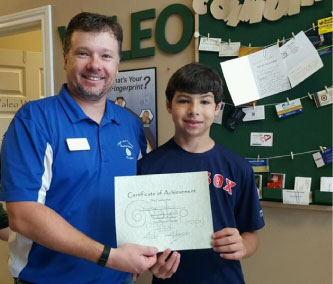Tiny shock absorbers in the knee (each one is called a meniscus) provide a key cushion between the thighbone and the shinbone. They are prone to tearing, and sometimes just wear out. A torn meniscus can cause pain or other symptoms, like a knee that locks. But sometimes they don’t cause any symptoms.
thighbone and the shinbone. They are prone to tearing, and sometimes just wear out. A torn meniscus can cause pain or other symptoms, like a knee that locks. But sometimes they don’t cause any symptoms.
In a youngish person, when a knee-wrenching activity like skiing, ultimate Frisbee, or slipping on the ice tears a meniscus, the damage is often repaired surgically. But a torn meniscus is often seen in the 9 million Americans with knee osteoarthritis, and for them the best course of action hasn’t been crystal clear. Results of the Meniscal Tear in Osteoarthritis Research (MeTeOR) trial published yesterday in the New England Journal of Medicine indicate that physical therapy may be just as good as surgery.
When the shock-absorbing cartilage in the knee is torn by injury or worn ragged by use, the result is called a meniscal tear. Stiffness and a vague sensation that the knee is not moving properly often result.
Surgeons at Harvard-affiliated Brigham and Women’s Hospital and six other large hospitals recruited 351 men and women with symptom-causing knee osteoarthritis and a meniscal tear. Half completed a six-week physical therapy program aimed at easing inflammation, strengthening muscles supporting the knee, and improving the knee’s range of motion. The other half underwent a procedure called arthroscopic partial meniscectomy, in which unstable pieces of the meniscus are removed and the remaining edges are smoothed, followed by the same physical therapy program.
Participants in both groups reported similar improvements in knee function and pain at six and 12 months. About one-third of those who received only physical therapy “crossed over” during the course of the trial and had surgery.
“We did this trial because surgeons really haven’t been sure what’s best for these patients,” said Dr. Jeffrey N. Katz, professor of medicine and orthopedic surgery at Harvard Medical School, who was one of the leaders of the trial. “Now we have a better picture, and can advise people with knee osteoarthritis and a torn meniscus that physical therapy and surgery are both good options.”
Keep in mind that the people participating in this trial had already had an MRI and been referred to a surgeon. For most people with knee osteoarthritis and a possible meniscus tear, conservative therapy is usually the place to start, especially when symptoms are mild, says Dr. Robert H. Shmerling, an associate professor of medicine at Harvard Medical School and rheumatologist at Beth Israel Deaconess Medical Center.
Making the choice
In younger people, it usually takes a strong twisting force to tear a meniscus. In people with osteoarthritis, the meniscus can tear without an injury, probably a result of ongoing degeneration of the cartilage.
Symptoms of a torn meniscus include:
- stiffness and swelling in the knee
- pain and tenderness along the joint line or general knee pain
- swelling in and around the knee
- catching or locking of the knee
As the NEJM report points out, not all meniscal tears need to be repaired. In fact, since even a torn meniscus can function as a shock absorber, it may sometimes be a better option to support it with physical therapy than surgically removing bits of it.
Next steps for the MeTeOR team include trying to determine if certain symptoms or psychosocial characteristics or other factors can identify individuals as better candidates for physical therapy or surgery. SOURCE
Take our Free HIPAA-Compliant Health Assessment to see what YOUR body needs more of to thrive!
Yours in Good Health,
Your Valeo Family

